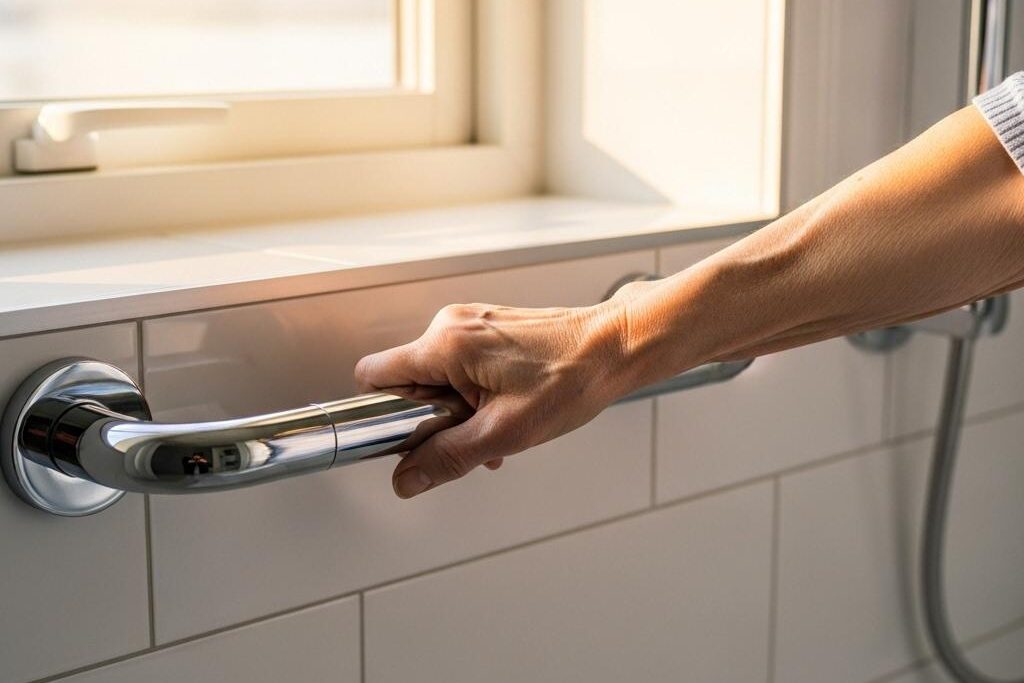The bathroom is one of the most dangerous places in the home, especially for the elderly. Slippery floors, sharp edges, and hard surfaces can all pose significant risks. It’s essential to implement bathroom safety tips for elderly to create a secure and accessible environment. In this article, we will explore various ways to enhance bathroom safety for seniors, ensuring their well-being and peace of mind.

Understanding the Importance of Bathroom Safety for Seniors
As people age, their mobility and balance can decline, making them more susceptible to falls and injuries. The bathroom, with its wet and slippery surfaces, can be particularly hazardous. By taking proactive measures, you can significantly reduce the risk of accidents and ensure the safety of your elderly loved ones.
Assessing the Bathroom Environment
Before implementing any safety measures, it’s crucial to assess the current state of the bathroom. Look for potential hazards such as loose rugs, inadequate lighting, and slippery surfaces. Identifying these risks will help you determine the necessary changes to make the bathroom safer.
Installing Grab Bars and Handrails
One of the most effective ways to improve bathroom safety is by installing grab bars and handrails. These provide support and stability, helping seniors maintain their balance while moving around the bathroom. Place grab bars near the toilet, shower, and bathtub for maximum benefit.
Non-Slip Mats and Flooring
To prevent slips and falls, use non-slip mats in the shower and bathtub. Additionally, consider replacing slippery tiles with textured flooring that provides better traction. This simple change can significantly reduce the risk of accidents.
Shower Chairs and Transfer Benches
For seniors with limited mobility, shower chairs and transfer benches are invaluable. These assistive devices provide a stable place to sit while showering, reducing the risk of falls. Ensure the chair or bench is sturdy and fits securely in the shower or bathtub.
Adjustable Shower Heads
An adjustable shower head can make bathing easier and safer for seniors. It allows them to control the water flow and direction without having to move around too much, minimizing the risk of slipping.
Temperature Control and Scald Prevention
Hot water can cause serious burns, particularly for seniors with sensitive skin. Install thermostatic mixing valves on faucets and showers to regulate water temperature and prevent scalding. Set the water heater to a safe temperature, ideally below 120 degrees Fahrenheit.
Improving Bathroom Lighting
Good lighting is essential for bathroom safety. Ensure the bathroom is well-lit, with bright, even lighting that eliminates shadows. Consider installing night lights to help seniors navigate the bathroom safely at night.
Accessible Toilets
Standard toilets can be difficult for seniors to use, particularly those with mobility issues. Consider installing a raised toilet seat or a comfort-height toilet to make it easier for them to sit and stand. Adding a toilet safety frame can also provide additional support.
Creating a Safe Bathing Environment
Bathing can be challenging for seniors, so it’s important to create a safe and accessible environment. Install a walk-in bathtub or a low-threshold shower to make entry and exit easier. Consider using a handheld showerhead for added convenience.
Organizing Bathroom Essentials
Keep frequently used items within easy reach to minimize the need for bending or stretching. Use shelves, baskets, or caddies to organize bathroom essentials, ensuring everything is easily accessible.
Emergency Preparedness
In case of an emergency, it’s important for seniors to have a way to call for help. Install an emergency alert system in the bathroom, such as a waterproof emergency button or a phone within reach.
Regular Maintenance and Inspections
Regularly inspect the bathroom to ensure all safety features are in good working order. Check grab bars, handrails, and non-slip mats for wear and tear, and replace them as needed. Keeping the bathroom in top condition is crucial for ongoing safety.
Engaging with Technology
Technology can play a significant role in maintaining bathroom safety for the elderly. Consider integrating smart home devices, such as motion sensors or automated lighting, to enhance safety. For more insights on how technology can assist in elderly care, visit Fall Detection in Smart Homes.
Encouraging Open Communication
Maintain open communication with your elderly loved ones about their bathroom experiences. Encourage them to voice any concerns or difficulties they encounter, allowing you to address issues promptly and ensure their safety.
Conclusion
Implementing bathroom safety tips for elderly is crucial for creating a safe and comfortable environment. By assessing the bathroom, installing safety features, and engaging with technology, you can significantly reduce the risk of accidents and enhance the quality of life for seniors. For more information on creating a safe home environment, visit Creating a Safe and Accessible Home Environment for Seniors.

FAQ
What are the most important bathroom safety features for seniors?
Key safety features include grab bars, non-slip mats, shower chairs, and adequate lighting. These elements help prevent falls and enhance accessibility for seniors.
How can technology improve bathroom safety for the elderly?
Technology, such as motion sensors and automated lighting, can enhance bathroom safety by providing additional support and convenience. Learn more about smart technology for elderly care at Smart Elderly Care Solutions.
Why is it important to regularly inspect bathroom safety features?
Regular inspections ensure that all safety features are functioning properly and remain effective in preventing accidents. This proactive approach helps maintain a safe environment for seniors.
This article contains affiliate links. We may earn a commission at no extra cost to you.






